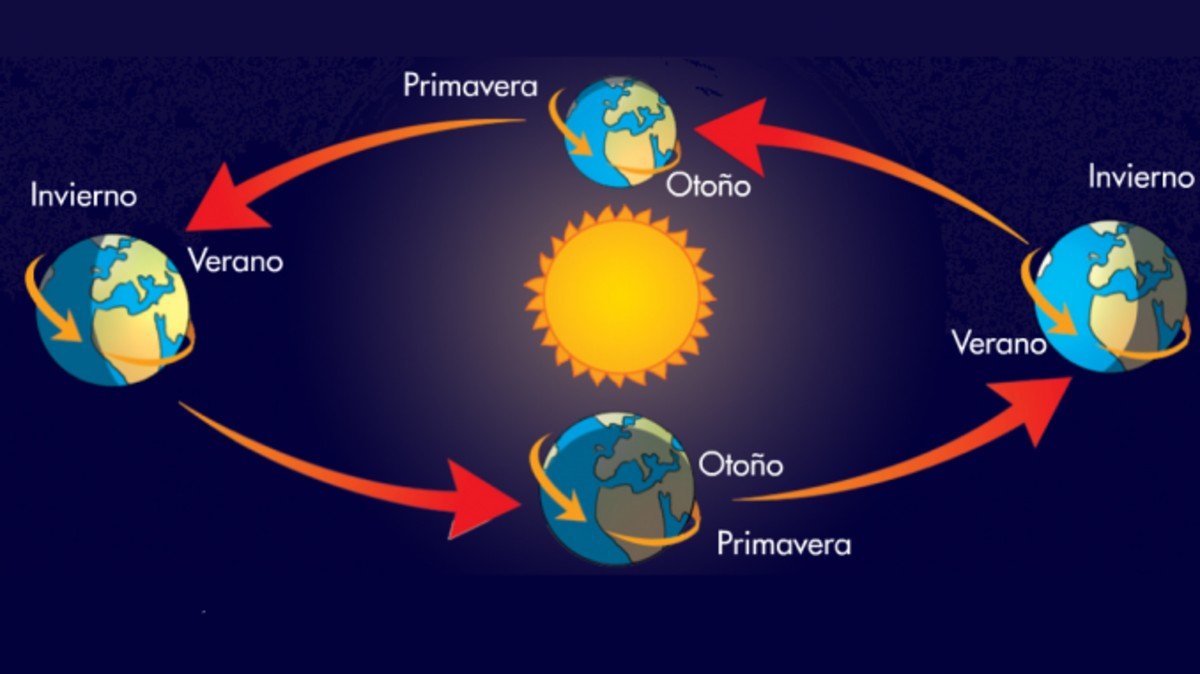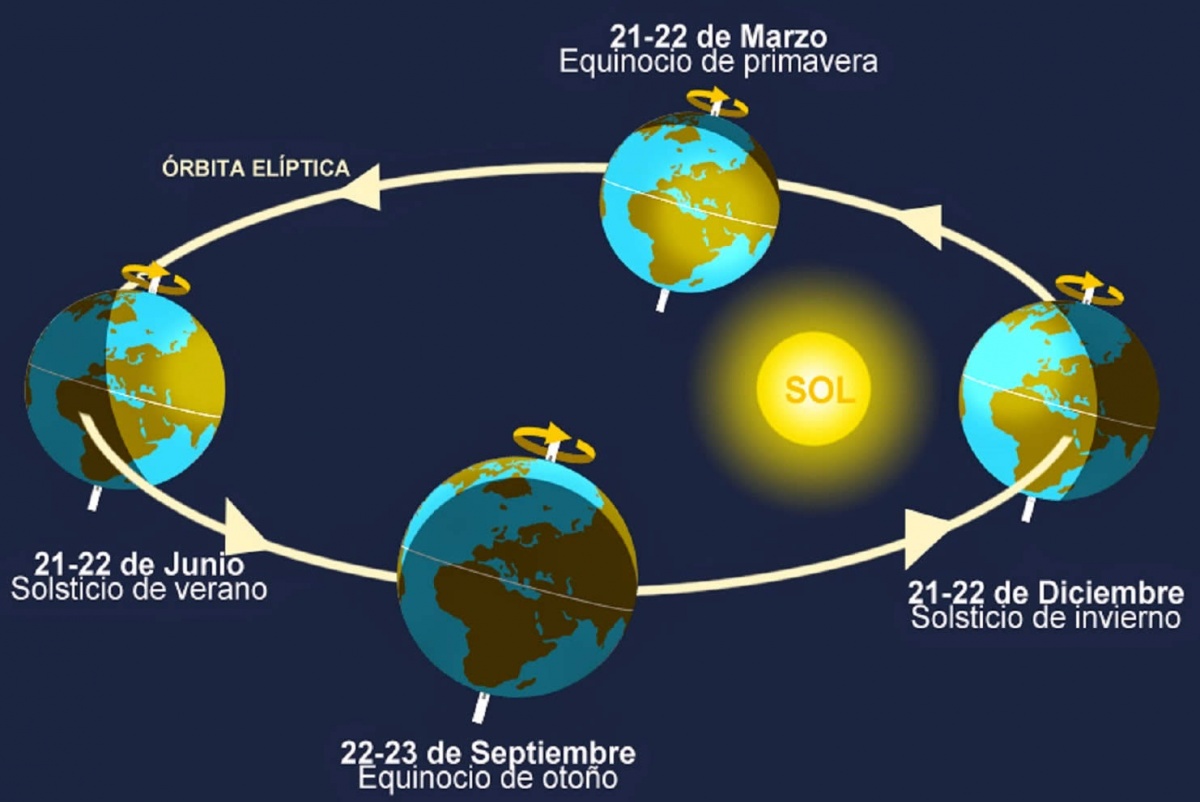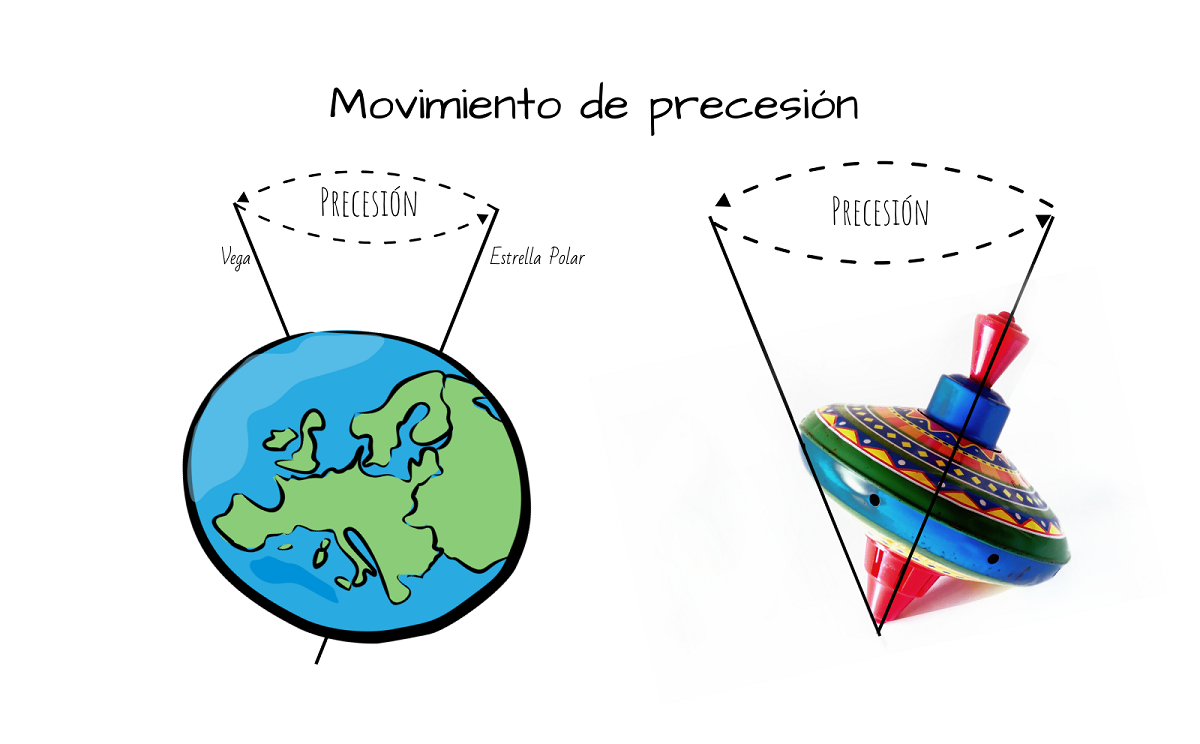
Our planet belongs to the solar system and is constantly moving around the sun. There are different types of movements of the earth and each of them has a different effect on life. We have the movement of rotation, translation, precession and nutation. These four movements are the most important on our planet.
For this reason, we are going to dedicate this article to telling you what the main movements of the Earth are, their characteristics and their importance.
Earth movements

Rotation
This is the most famous move along with translation. However, there must be some important aspects that you do not know. But that's okay because we'll check them out. We start by defining what this movement is. It is the rotation of the earth to the west or to the east on its own axis. It is considered counterclockwise. The Earth takes an average of 23 hours, 56 minutes and 4 seconds to rotate once.
As you can see, there is day and night due to this rotational movement. This happens because the sun is in a fixed position and only illuminates the side of the Earth that is facing it. Otherwise it will be dark, it will be night. The effect can also be seen during the day, keep an eye out for shadows after work. We can understand how the movement of the Earth causes shadows to appear in other places.
Another consequence of this very important rotational movement is the creation of the Earth's magnetic field. Thanks to this magnetic field, we can have life on Earth and still protect ourselves from the solar wind. It also allows for the presence of life in the atmosphere and life on Earth.
If we take into account what happens at each point on the earth, its rotation speed is different in every way. If we measure the speed from the equator or from the poles, it will be different. In Ecuador, it has to travel farther to pivot and will travel at 1600 km/h. If we choose a point at 45 degrees north latitude, we can see it spinning at 1073 km/h.
Translation

We turn to the analysis of the second most complex movement of the Earth. The movement of the earth consists of rotating its orbit around the sun. This orbit describes an elliptical movement that brings it closer to the sun in some cases and moves it away in others.
It is thought to be hotter during the summer months because the planet is closer to the sun and farther away in winter. Consider that if we were further away, less heat would reach us than if we were closer. However, the opposite is true. In summer we are further from the sun than in winter. The setting at the change of seasons It is not the distance of the earth from the sun, but the inclination of the sun's rays. In winter, the sun's rays hit our planet more obliquely, and in summer more vertically. This is the reason why there are more hours of sunshine and more heat in summer.
The Earth takes 365 days, 5 hours, 48 minutes and 45 seconds to make a complete revolution on its axis of translation. So we have a leap year every four years, with an extra day in February. This is done to adjust the schedule and keep it consistent at all times.
The Earth's orbit around the sun has a circumference of 938 million kilometers and a mean distance of 150 million kilometers. We are moving at 107.280 km/h. Despite the speed, we do not appreciate it due to gravity.
Aphelion and perihelion
Our planet's path in front of the sun is called the ecliptic and it crosses the equator in early spring and fall. They are called equinoxes. in this positionday and night are the same. At the furthest point from the ecliptic we find the summer and winter solstices. At these points in time, the days are longer and the nights are shorter (summer solstice), and the nights are longer and the days are shorter (winter solstice). During this phase, the sun's rays fall more vertically on one of the hemispheres, causing it to heat up more. So while it's winter in the northern hemisphere, it's summer in the southern hemisphere, and vice versa.
The translation of the Earth on the Sun has an additional moment called aphelion, which occurs in July. Instead, Earth's closest point to the Sun is perihelion, which occurs in January.
Other movements of the Earth

Precession motion
This is a slow and gradual change in the direction of the Earth's axis of rotation. This motion, called precession of the Earth, is caused by the torque exerted by the Earth-Sun system. This motion directly affects the tilt of the sun's rays reaching the Earth's surface. Currently, the inclination of this axis is 23,43 degrees.
This tells us that the Earth's axis of rotation does not always point to the same star (the poles), but instead rotates clockwise, causing the Earth to move in a motion similar to that of a top. A complete rotation of the precession axis takes about 25.700 years and is therefore imperceptible on a human scale. However, if we measure it in geological time, we can see that it has a strong correlation with glacial times.
Nutation movement
This is the last big move for our planet. This is a slight and irregular movement that occurs in the axis of rotation of all symmetrical objects that rotate around their axis such as gyroscopes.
If we analyze the Earth, this nutation movement is the periodic oscillation of the axis of rotation around its mean position on the celestial sphere. This movement occurs due to the force exerted by the Earth's gravity and the attractive force between the Moon, the Sun and the Earth. This small wobble of the Earth's axis occurs due to the equatorial bulge and gravitational pull of the Moon. The nutation period is 18,6 years.
I hope that with this information you can learn more about the movements of the Earth and its characteristics.